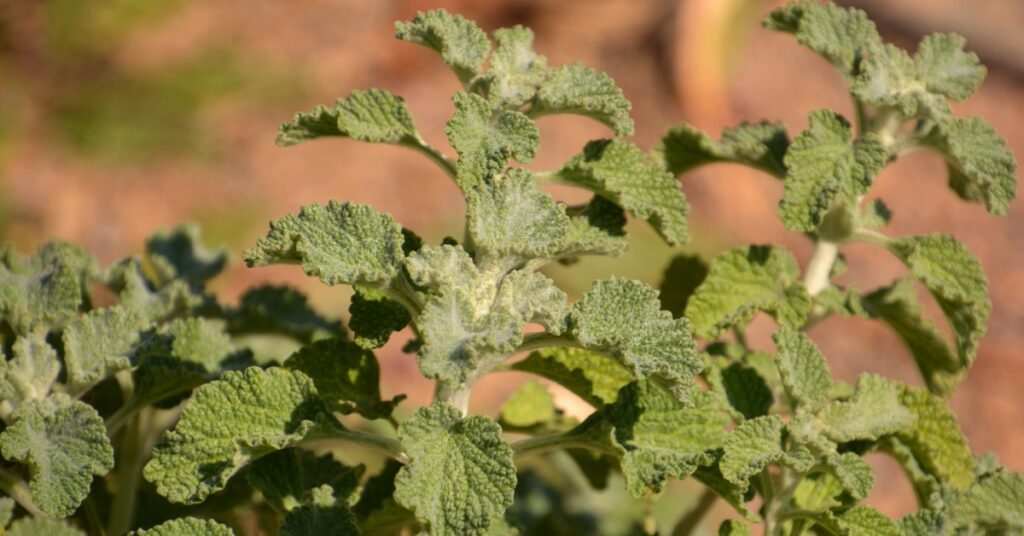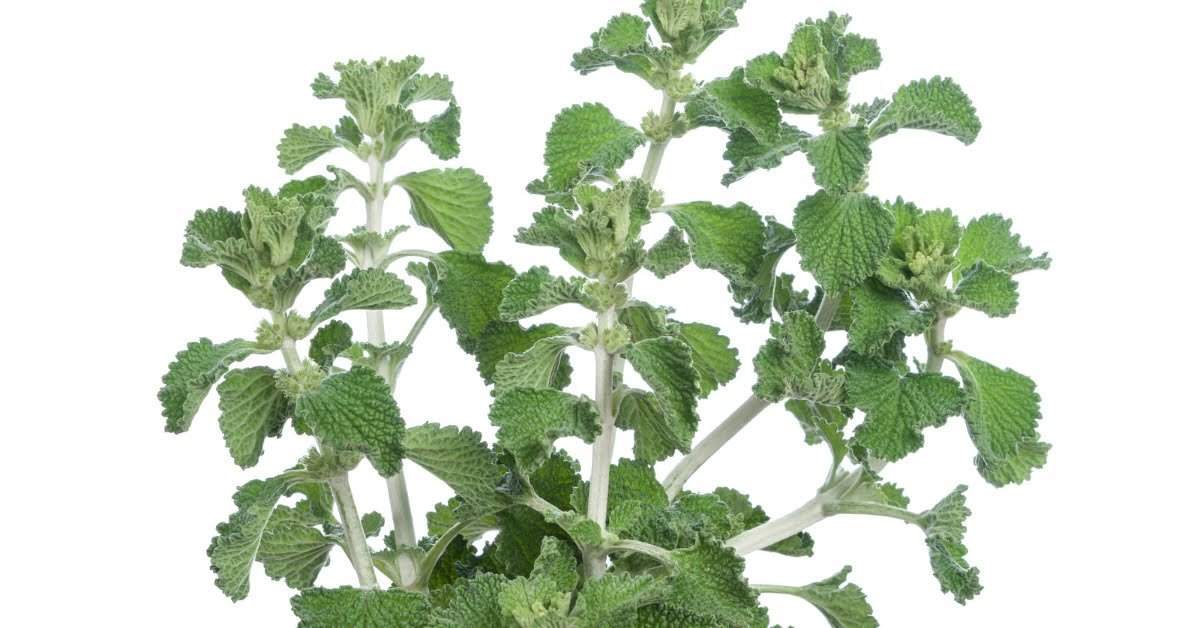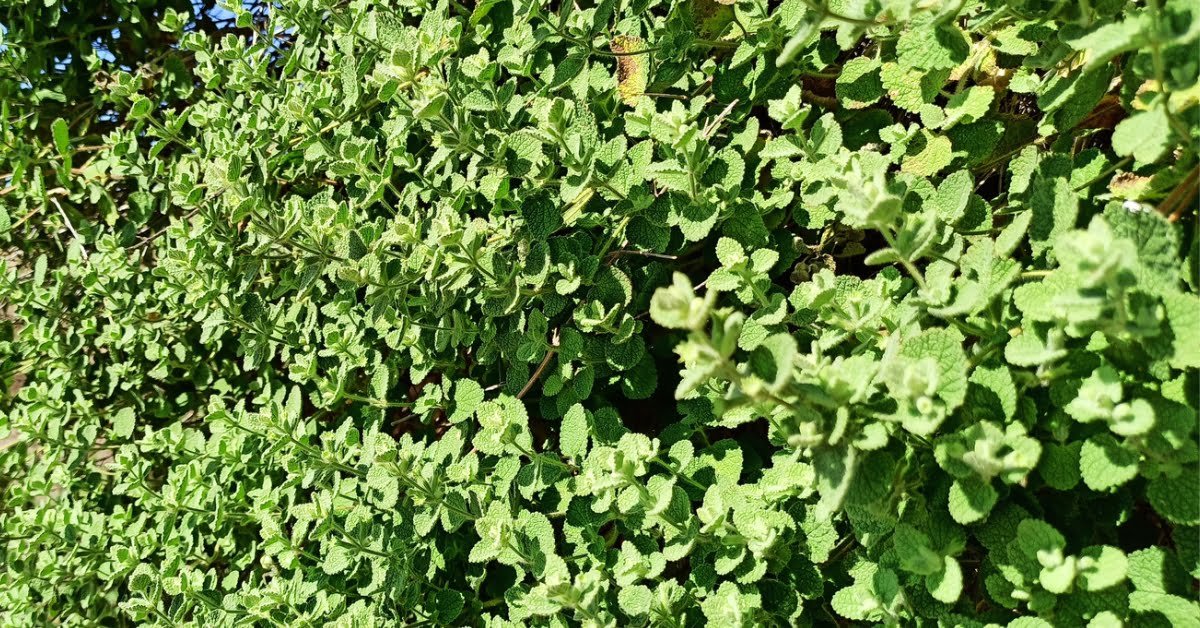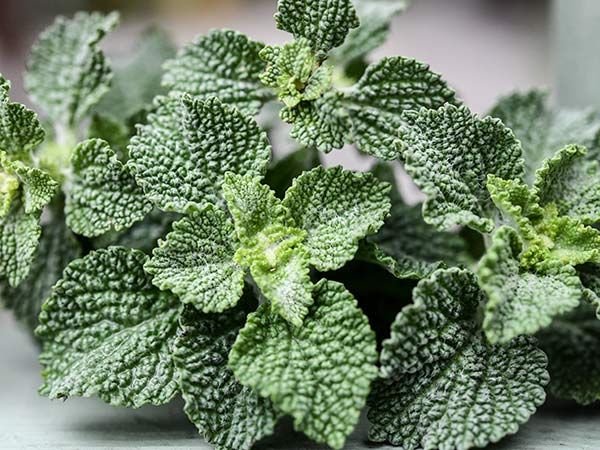White Horehound is a perennial plant that is known for its traditional remedy for coughs. The plant has earned its place in the herb garden with its mounds of silvery foliage that last all season long in most climates. The white flowers of the plant are pretty but not really showy. The plant is a must for candy-making and flavorful, medicinal tea.
White Horehound
| Common Names or AKA Names: |
|
| Botanical Name: | Marrubium vulgare |
| Family: | Lamiaceae |
| Plant Type (Zone 8b): | Perennial |
| Hardiness Zones: | Zones 3 through 9 |
| Mature Size: | 24″ – 30″ inches tall, 24″ – 36″ inches wide |
| Native Area: | Europe, Northern Africa, Southwestern & Central Asia |
| Bloom/Harvest Time: | Flowers bloom from June to Sept |
| Sun/Light Exposure: | 8 to 12 hours of Light. |
| Planting Depth: | 1/4 inch deep. |
| Soil Preferences: | Sandy & Dry |
| Soil pH: | 4.5 – 8.3 pH |
| Aquaponically-Friendly: | YES |
| Hydroponically-Friendly: | YES |
DESCRIPTION:
White horehound (Marrubium vulgare) is a perennial herb in the mint family. It is native to Europe and North Africa but has been introduced to other parts of the world including Australia and North America. The plant grows up to 30″ inches tall and has white flowers. The leaves are ovate-shaped (almost heart shaped like), hairy, and have a strong aromatic odor.
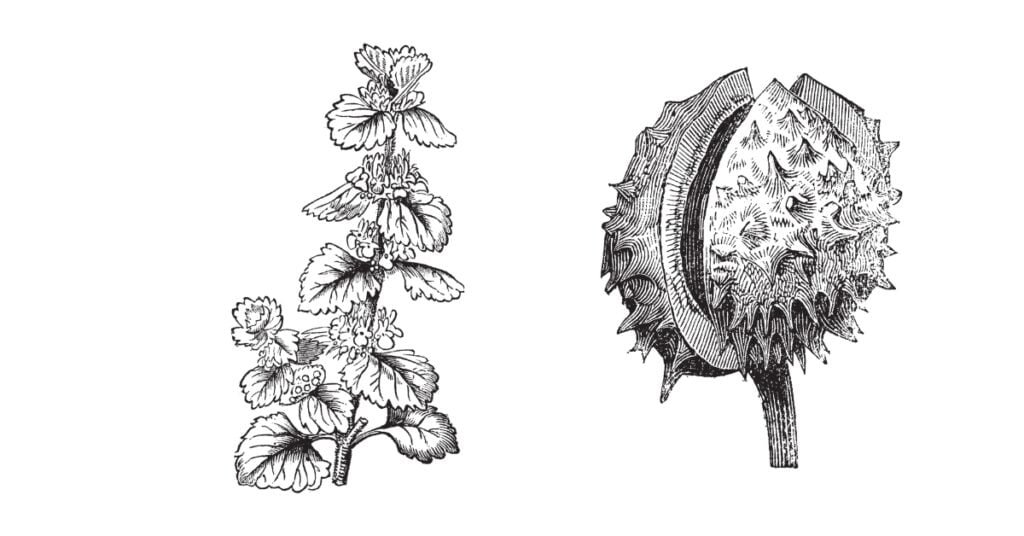
USE:
The plant has been used since ancient times for its medicinal properties. White horehound was mentioned by the Roman encyclopaedist Aulus Cornelius Celsus as a remedy for respiratory ailments in his treatise De Medicina. The plant is also listed by the Roman agricultural writer Columella as a remedy for expelling worms in farm animals in his work On Agriculture. Since then, the White Horehound has appeared for similar purposes in numerous herbals over the centuries such as The Herball, or Generall historie of plantes by John Gerard, and Every Man His Own Doctor: or, The Poor Planter’s Physician by Dr. John Tennent.
The leaves of White Horehound can be used fresh or dried to make beverages such as herbal tea (similar to mint tea), horehound beer (similar to root beer), or the rock and rye cocktail. The U.S Food and Drug Administration does not endorse the plant for use as medicine but considers it to be generally safe when used as a food additive.
White Horehound has a bitter, pungent flavor well suited for both sweet and savory preparations. The leaves can be used fresh, chopped and blended into sauces such as pesto, rubbed over meats, mixed into salsa, or lightly torn and tossed into green salads, fruit salads, dressings, curries, and soups. White Horehound can also cut the richness of fat and stand up to spicy and hot ingredients. Beyond culinary preparations, White Horehound can be muddled and used as a complementary ingredient in cocktails, juices, and beer, or it can be cooked into syrups, candies, and desserts. When dried, the leaves are primarily steeped into teas, or they can be finely ground and used as flavoring. White Horehound pairs well with other herbs, including thyme, mint, and parsley, seafood, meats such as lamb, poultry, and beef, apples, apricots, feta, and earthy spices such as cumin and cardamon. Fresh White Horehound will keep for a couple of days when stored in the refrigerator. Dried leaves will keep up to one year when stored in a cool and dark place away from direct sunlight.
Many pests – like aphids and grasshoppers – are deterred by the smell of the leaves and flowers, so plant it in the garden if you need to keep pests away from susceptible plants. It will also attract beneficial insects like bees, braconid and ichneumon wasps, and tachinid and syrphid flies.
Culture & Cultivation:
The White Horehound is a herb that was commonly found in the medicinal chests of Egyptian Pharaohs. It is believed to be one of the oldest natural cough remedies. The Egyptian priests referred to the herb as the “seed of Horus“, which is a reference to one of the many sacred gods in Egyptian mythology. The White Horehound contains anti–inflammatory and antibacterial properties, along with other compounds that help stimulate the throat to release tightness and phlegm. Throughout history, it has continued to be used as a throat soother and was eventually incorporated into cough drops in the 20th century. Old–fashioned candies also use the bitter herb as an added flavoring and can still be found through select online retailers in the modern day.
If you want to learn more about cultivating this specific plant, you might want to check out our online courses where we have plant specific mini courses in addition to our standard fully packed courses and master gardening courses.
Planting & Care:
White Horehound prefers dry, sandy soil, but it’s not picky. It will grow in loamy and clay soils, as well. Soil with low nutrients won’t phase it; White Horehound is often found growing along roadsides and in disturbed areas. It isn’t picky about pH, either; anything from 4.5 to 8.3 will do. However, the plant does need well–draining soil. If you have poor drainage in the area where you plan to grow your plants, you should work in lots of well–aged compost before planting White Horehound.
While you don’t need to prune horehound, you might want to head out once a year and pull up clumps of it to keep the plant in check. Just dig up the plant wherever you don’t want it, and be sure to dig deep to get all the roots.
Seeds can be started indoors or sown directly into the garden with ease. It’s easier to start them outdoors because you can let Mother Nature do the work of cold stratifying the seeds; however, if you’re planting in Zone 9 or higher, you’ll need to do the cold stratification work yourself.
To stratify seeds indoors, or if you’re planting in Zone 9 or higher, put a cup of sand in a resealable bag or glass jar. Add seeds to the sand and mix them in. Pour water on the sand until it is completely moist – but not soggy – all the way through. Seal the bag or container and place it in the coldest part of the fridge. Check once a week or so to see if the sand is drying out; if so, add a little more water. After a month,the seeds are ready to leave the fridge and go into the soil. The seeds are black and stand out in the sand, so you can scoop them out with teaspoon and plant them individually at a quarter inch deep.
What we recommend is a two-inch layer of seed starting medium into the seedling tray, then spread the sand evenly over top of the medium. Finally, sprinkle a thin layer of fresh sand on top and give everything a spritz of water from a spray bottle. After two or three weeks, seedlings should emerge. At that point, put seedlings where they’ll receive indirect light for five or six hours a day and thin them so that plants are four inches apart. After seedlings are about two inches tall, you can transplant them into a garden spaced about 12 inches apart
Stem Cutting – To propagate from stem cuttings, you‘ll need to fill a small container with general purpose potting soil. In the summer before flowering, snip off a stem that has at least four sets of leaves. Cut just below a leaf node and strip the bottom half of the leaves, taking care to leave at least two sets in place at the top. Dip the cut end in rooting hormone product and then place it in your prepared container. Keep the cutting moist as it develops new roots, which takes about three weeks. Once you see new growth forming, you can water as normal. That means allowing the top of the soil to dry out before adding new water.
If you want to learn about White Horehound, then you should know that it is easy to divide this plant. You can divide your plant any time the soil is workable, but spring or fall is best. To get started, dig up a chunk of horehound using a garden spade.
Try to dig up at least eight inches or so in diameter and dig down about nine to 12 inches to ensure you have plenty of roots. It’s more important that you get a good bit of the roots rather than a lot of stems. Then, use a sharp pair of gardening scissors or a gardening knife to cut through the roots and separate the plant in half. Replace the original plant in the ground and fill in around it with soil. Plant the other half in its new spot as you would a transplant.
Growing new plants can be difficult at times but not to worry Green Grass Grove Academy is here to help! We are excited to offer Online Courses on plant care and other Gardening and Homesteading Courses. Our goal is to provide you with the knowledge and skills necessary to become a successful gardener. Our Online Courses are designed to be self-paced and to be completed at your convenience. Courses contain invaluable information to help you become the ultimate Gardener! In addition, Our Courses have entertaining multimedia, quizzes, and a final exam to test your knowledge. Upon completion of each course, you are eligible to receive a certificate of completion. Some of our most popular courses include Aquaponics/Hydroponics, Plant Pathology, Seeds & Seedlings, Microgreens, Plant Mini-Courses, and Insect Pest & Nutrients Management.
So what are you waiting for? Come on over to Green Grass Grove Academy and let us help you become the ULTIMATE GROWER!
Watering:
Horehound is very drought tolerant. Excessive watering or standing water will kill the plant, especially if planted in a soggy site during the winter. During the summer, water no more than one time per week allowing the soil to dry between irrigations.
Harvesting:
Harvest the leaves and stems as needed throughout the growing season. If you want to dry the leaves and flowers, cut the stems at ground level using a pair of clippers right as the blossoms open, usually starting around 75 days after planting.
If you cut the plant back to the ground after flowering, it will usually grow a second crop. Once the plant finishes flowering for the season, the stems turn woody and the leaves lose their flavor. Unless you want to harvest seeds, there’s no point in letting the plant go to seed.
To store, wrap leaves and stems in paper towels and place inside a zip–top bag in the refrigerator. They can last a week or two this way. Wash the leaves right before using.
PRESERVING
Drying the leaves of the horehound white plant is the best way to preserve it. The plant retains its scent and flavor upon drying, and the flavor actually improves quite a bit. To dry, hang bundles of the leaves tied together upside down in a shaded area with good air circulation. Once they are dry and crisp to the touch, crumble the leaves and blossoms, or leave them whole and store them in an airtight container in a dark, cool spot. Stored this way, they should last for about a year or so. You could also freeze the leaves by washing them thoroughly and placing them in a zip–top freezer bag. Squeeze out all the air and seal it. They can last about six months this way.
Candy Recipe
To make your own candy at home – with the real, homegrown herb – try the following:
- Gather a cup of leaves (dried or fresh, it doesn’t matter) and steep them for 15 minutes in a cup of simmering water.
- Add 1 3/4 to 2 cups sugar and bring to a boil (adjust based on your taste preference – more sugar means a less intense flavor). Boil until the mixture reaches 300°F (on my stove, this takes about 20 minutes).
- Pour the mixture into a nine-inch-square baking pan lined with parchment paper and let it sit for a few minutes until it has become firm but not solid. At that point, cut the candy into small pieces.
- Allow it to harden the rest of the way on the counter at room temperature, then break apart the pieces that you cut earlier.
- They will stick back together slightly while the candy dries, but they should break apart easily. Store in a sealed jar.
You can even add these little candy chunks to your tea instead of honey or sugar when you have a cough or upset stomach.
The dried leaves make an interesting addition as a spice on top of meat, fish, or veggies, though We do admit it’s a bit of an acquired taste.
Without the added sweetness, the leaves have a sort of smoky, bitter flavor with hints of licorice and mint.
Just remember, don’t use too much, both because the flavor can be overwhelming, and because of the aforementioned potential health concerns.
When it comes to horehound, you can have too much of a good thing. If you consume an excessive amount, you’ll potentially have diarrhea, nausea, and vomiting.
It may impact blood sugar, blood pressure, and heart rhythm. While rare, the impact can be serious.
Take Our Online Insect Pest Management Course to become an expert at dealing with these pests and others too!
Learn More About This Plant!
The White Horehound plant has been used to make medicine for generations. The parts of the plant that grow above the ground are used for digestion problems, including diabetes, loss of appetite, indigestion, bloating, gas, diarrhea, constipation, and liver and gallbladder complaints. White horehound is also used for lung and breathing problems, including cough, whooping cough, asthma, tuberculosis, bronchitis, and swollen breathing passages. Women use white horehound for painful menstrual periods. People also use it to kill parasitic worms, to cause sweating, and to increase urine production. White horehound is sometimes applied to the skin for skin damage, ulcers, and wounds. In manufacturing, the extracts of white horehound are used as a flavoring agent in foods and beverages, and as expectorants in cough syrups and lozenges. Expectorants are ingredients that make it easier to cough up phlegm. Click Here to read what WebMD has to say about this plant!
- It has been used in herbal medicine since the 1st century and is still used today.
- Horehound is usually found in disturbed and overgrazed areas. It is highly unpalatable to livestock, so livestock eat other plants around it, a process that favors the persistence and spread of the weed. It may persist in native vegetation that has been grazed.
- M. vulgare is used to make beverages such as horehound beer (similar to root beer).
- Marrubium vulgare is also used as a natural grasshopper repellent in agriculture.
- Attracts bees
- They spread via runners and self-seeding.
- Recommended Propagation Strategy: Division/Leaf Cutting/Seed/Layering
- You might not see flowers in the first year or two of growth.
- Fertilize once in the spring with a balanced fertilizer.
- The active ingredients are several types of terpenoid compounds including marrubiin, which studies indicate could have antioxidant, antimicrobial, anti-inflammatory, antidiabetic, and analgesic properties.
The information in this post is NOT medical/nutrition advice, as we are not doctors or nutritionists. This information is for informational/entertainment purposes only and is not a substitute for professional medical advice, nutrition advice, diagnosis or treatment. If you have any concerns or questions about your health or nutrition intake, you should always consult with a doctor or other licensed and qualified healthcare professional.
Green Grass Grove Plant Profiles
No posts found!

